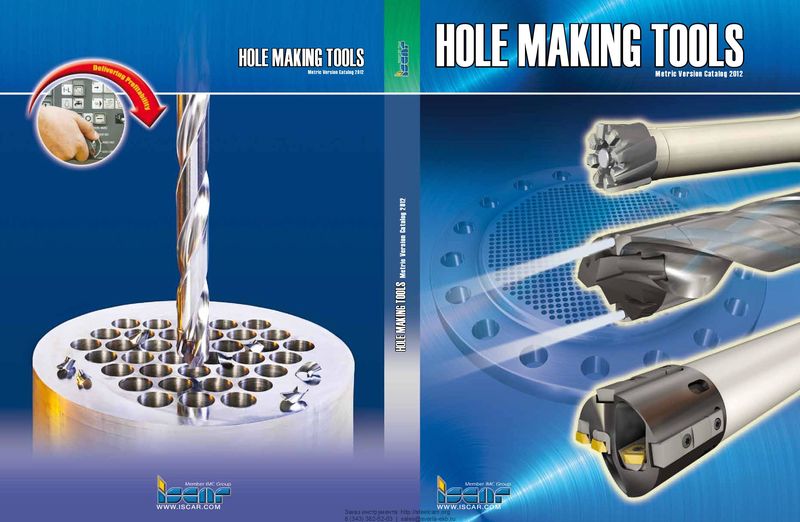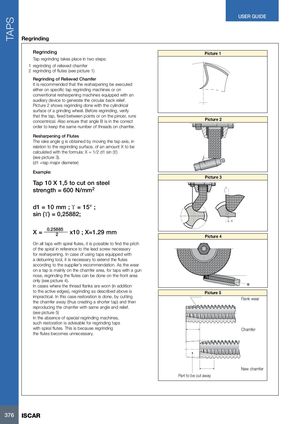Каталог Iscar высокоточные развертки и метчики 2022 - страница 66
Навигация
 Каталог Iscar инструмент для обработки отверстий
Каталог Iscar инструмент для обработки отверстий Каталог Iscar державки и пластины для нарезания резьбы 2022
Каталог Iscar державки и пластины для нарезания резьбы 2022 Каталог Iscar крепление инструмента
Каталог Iscar крепление инструмента Каталог Iscar токарные пластины ISO 2022
Каталог Iscar токарные пластины ISO 2022 Руководство Iscar режущий инструмент в производстве штампов и пресс-форм
Руководство Iscar режущий инструмент в производстве штампов и пресс-форм Каталог Iscar сверла ружейные и для глубокого сверления 2022
Каталог Iscar сверла ружейные и для глубокого сверления 2022 
TAPS USER GUIDE Regrinding Regrinding Picture 1 Tap regrinding takes place in two steps: 1 regrinding of relieved chamfer 2 regrinding of flutes (see picture 1) Regrinding of Relieved Chamfer It is recommended that the resharpening be executed either on specific tap regrinding machines or on conventional resharpening machines equipped with an auxiliary device to generate the circular back relief. Picture 2 shows regrinding done with the cylindrical surface of a grinding wheel. Before regrinding, verify that the tap, fixed between points or on the pincer, runs concentrical. Also ensure that angle B is in the correct Picture 2 order to keep the same number of threads on chamfer. Resharpening of Flutes The rake angle g is obtained by moving the tap axis, in relation to the regrinding surface, of an amount X to be calculated with the formula: X = 1/2 d1 sin (ϒ) (see picture 3). β (d1 =tap major diameter) Example: Picture 3 Tap 10 X 1,5 to cut on steel strength = 600 N/mm2 γ d1 = 10 mm ; ϒ = 15° ; sin (ϒ) = 0,25882; X X= 0.258852 x10 ; X=1.29 mm Picture 4 On all taps with spiral flutes, it is possible to find the pitch of the spiral in reference to the lead screw necessary for resharpening. In case of using taps equipped with a deburring tool, it is necessary to extend the flutes according to the supplier’s recommendation. As the wear on a tap is mainly on the chamfer area, for taps with a gun nose, regrinding the flutes can be done on the front area only (see picture 4). In cases where the thread flanks are worn (in addition ϕ to the active edges), regrinding as described above is Picture 5 impractical. In this case restoration is done, by cutting Flank wear the chamfer away (thus creating a shorter tap) and then reproducing the chamfer with same angle and relief. (see picture 5) In the absence of special regrinding machines, such restoration is advisable for regrinding taps with spiral flutes. This is because regrinding Chamfer the flutes becomes unnecessary. New chamfer Part to be cut away 376 ISCAR